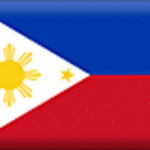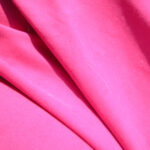As a child I distanced myself from my Filipino roots. The thought of the Philippines actually having a fashion sense summed up to loin cloth wearing tribal men or hand me downs from Spanish colonialism. Other then that, Filipinos I knew wore the same clothes as we wear in the states. But every once and awhile, for a very special event like a wedding or christening, I would see one or a few men wearing a dress shirt that was see through. It kind of made me laugh seeing this beautifully embroidered long sleeved shirt glimmering in the sun only to see right past it to the white t-shirt underneath soaked in armpit sweat and not covering the rest of the arm. But that was then, and I now see the how beautiful this see through fashion statement, called a Barong, is. Surprisingly, I was informed by my sister that my future brother in-law, and the court (including myself) will be wearing one for her wedding. And frankly, I’m kind of excited.
What is a Barong?
A Barong (or Barong Tagalog) is the national costume worn for special occasions in the Philippines. What makes the Barong stand out from a regular dress shirt is its fabrics material, transparency and elaborate embroidery. The barong is straight ended and is not tucked in when worn. Barongs are traditionally creamy white/ off set white while more expensive ones are made from better materials displaying more of a silvery white. Non-traditional barongs can come in any color as materials are dyed. Traditional barongs come with white to gold colored embroidery, but non-traditional barongs come in any color embroidery. Variations of the barong have also been made for less special occasions, such as Polo Barongs (short sleeved barongs) and Linen Barongs as an alternative to business suits worn by office workers.
Fabrics use in Barongs:
Barongs can be made of different fabrics. Some of which have been used as a sign of statue based on expense and scarcity of the fabric.
-Piña fabric – a hand-loomed from pineapple leaf fibers. Scarcity of the fabric, due to the scarcity of Piña fabric weaver, makes the Piña cloth expensive and is thus use to be associated with a higher class.
-Banana fabric – a hand woven banana fiber fabric. This fabric originates from the Visayas island of Negros in the Philippines.
-Jusi fabric – a mechanically woven fabric originally made from abaca (banana silk) but has been replaced by imported silk organza. Being mechanically woven makes the fabric less expensive than the Piña fabric.
-Piña-Jusi fabric – is a more recent barong fabric that is gaining much popularity. It has the sheerness of pineapple fibers and the strength of the Jusi fiber. This new fabric combination retains the allure of the Piña while keeping the prices reasonable in comparison.
Origins of the Barong:
It is a legend that the barongs originated during Spanish Colonialism as a result of law. It is believed that the barong was the answer to westernize the dress of the Filipinos while the transparency of the material prevents rebels from hiding weapons. It is also believed that the barong was worn un-tucked as a means of distinguishing the ruling class which wore their clothing tucked in their pants.
Although a popular belief, the ledged of the barong has no factual basis. Sociologist believe that the transparency of the fabric was to make the fabric more breathable in the hot weather of the Philippines, and the barong being un-tucked as a common practice for South East Asians.




